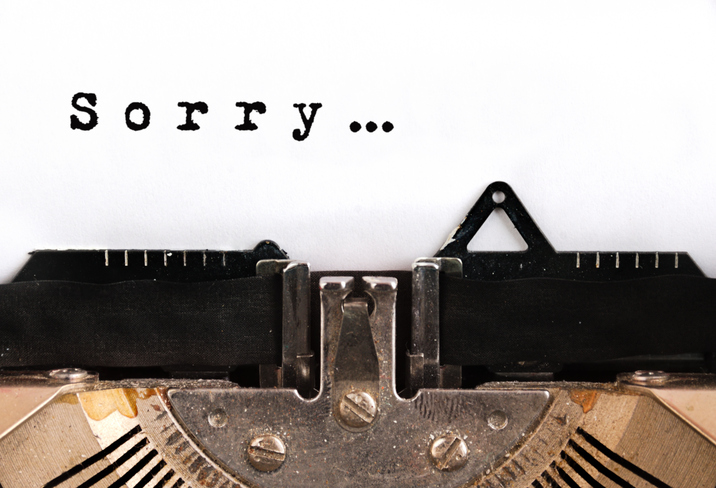It is important to recognize that sometimes things do go wrong – your organization is after all, comprised of fallible human beings. Or your organisation could be the victim of somebody else’s misdeed.
While it has become very fashionable to apologise, how can you do so and sound like you really mean it? Because too often, apologies – whether from organisations or individuals – fail to strike the right note.
The usual reason is that it is caveated. For instance “I am sorry IF I have offended anyone”. What this really sounds like is that “I’m sorry you are so stupid/ paranoid/ sensitive that you get offended so easily”. It sounds like you have made it out of necessity rather than conviction.
Such ‘not quite’ apologises are caused because a real apology needs only one word. “Sorry”. The moment you start adding words to this, you risk detracting from the force of the apology.
So the rules for an effective apology are:
1. Be swift. Not only does a late apology suggest it has had to be dragged out of you so you probably do not really mean it, but it also suggests that you really do not know the difference between right and wrong.
2. Be sincere. If you do not feel sorry, do not pretend to be. Your audience will always know. And sincerity is not apparent if you have to read your apology from a piece of paper. If you are genuinely sorry, it is important that the audiencebelieves that you have a genuine sense of real shame, even if on behalf of others.
3. Be succinct – do not try to explain or qualify your apology.
4. Do something about it. Say what you’re going to do to fix the problem. Outlining your plans and next steps is as important in
restoring the public faith in you as the apology itself.
So a sincere apology should express regret, remorse and repentance. We could do a lot worse than remember the wise words of our parents: “Say you’re sorry and mean it”.Look at the great apology offered by Greenpeace in December 2014 when it was criticized for holding a publicity stunt on the ancient Nazca lines in Peru and damaging the 1500 year old monument:
Look at the great apology offered by Greenpeace in December 2014 when it was criticized for holding a publicity stunt on the ancient Nazca lines in Peru and damaging the 1500 year old monument:
“Without reservation Greenpeace apologises to the people of Peru for the offence caused by our recent activity … We are deeply sorry for this. We fully understand that this looks bad … We came across as careless and crass. We have now met with the Peruvian Culture Ministry responsible for the site to offer an apology. We welcome any independent review of the consequences of our activity. We will cooperate fully with any investigation … Greenpeace is accountable for its activities and willing to face fair and reasonable consequences. The International Executive Director of Greenpeace, will travel to Lima this week, to personally apologise for the offence caused by the activity and represent the organisation in any on-going discussions with the Peruvian authorities. Greenpeace will immediately stop any further use of the offending images.”
If you want to speak to one of our journalists in order to find out more about the media or want to enquire about booking a training session, please call us on +44 (0)20 7323 2770 or email team@electricairwaves.com.

